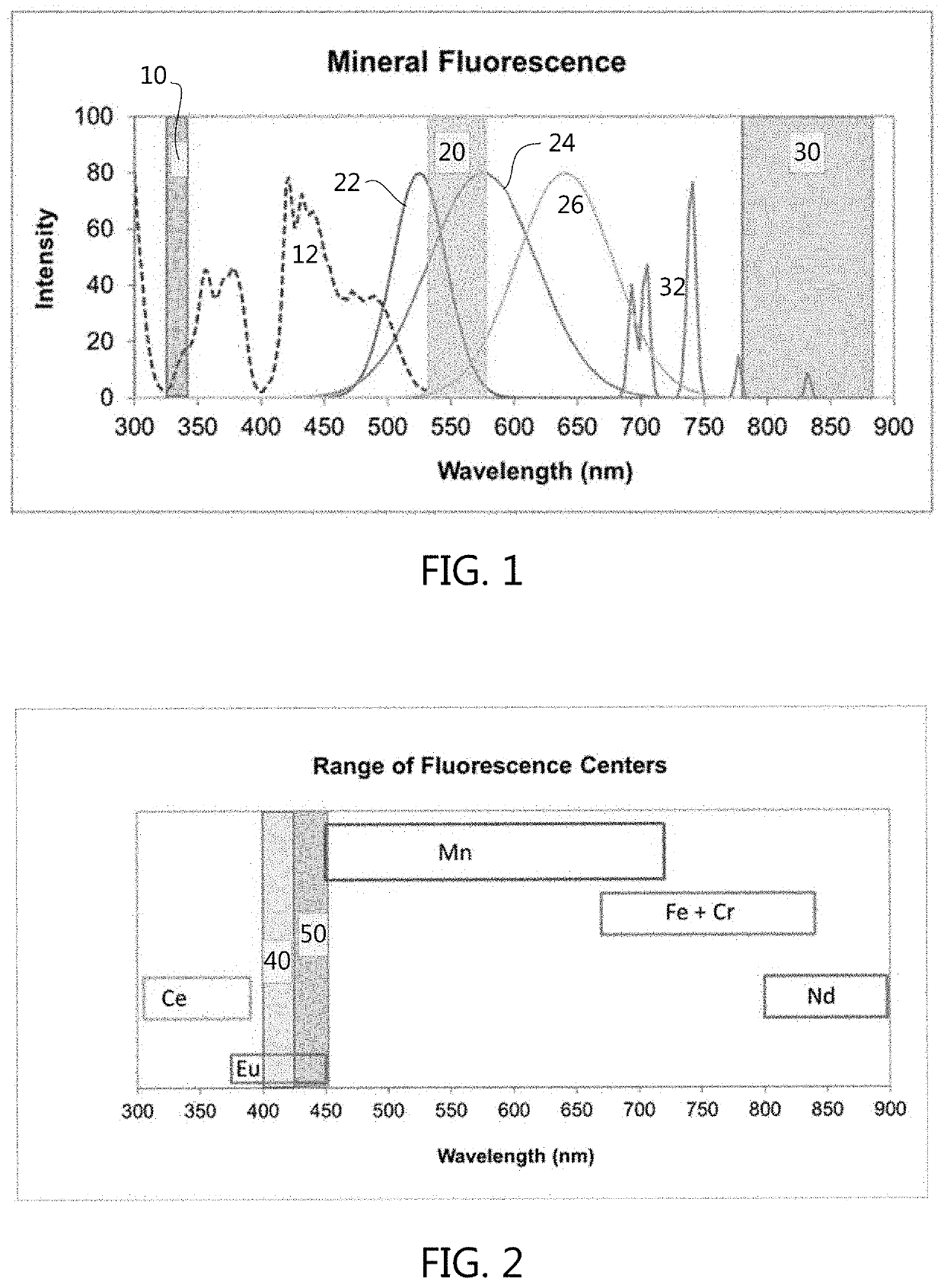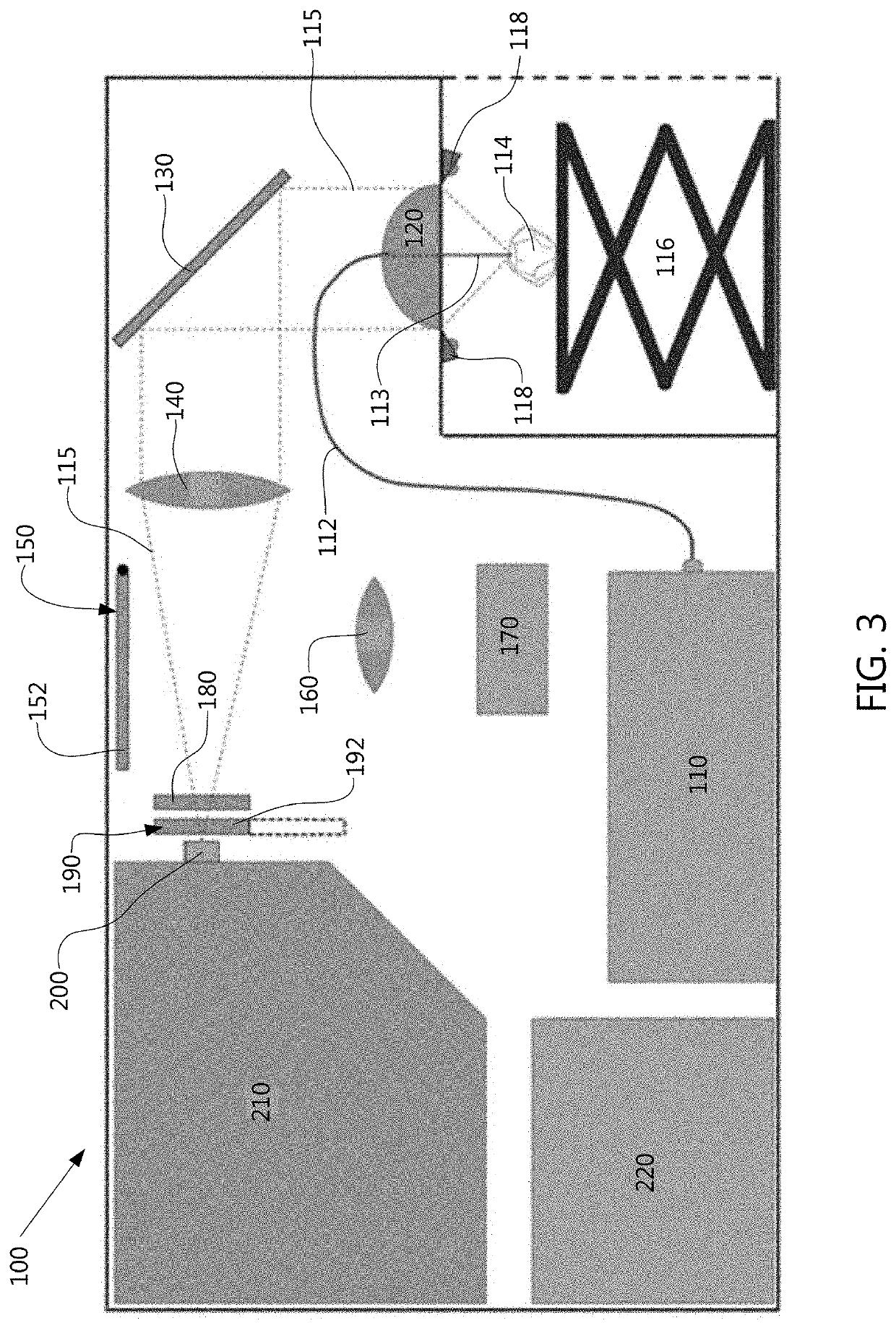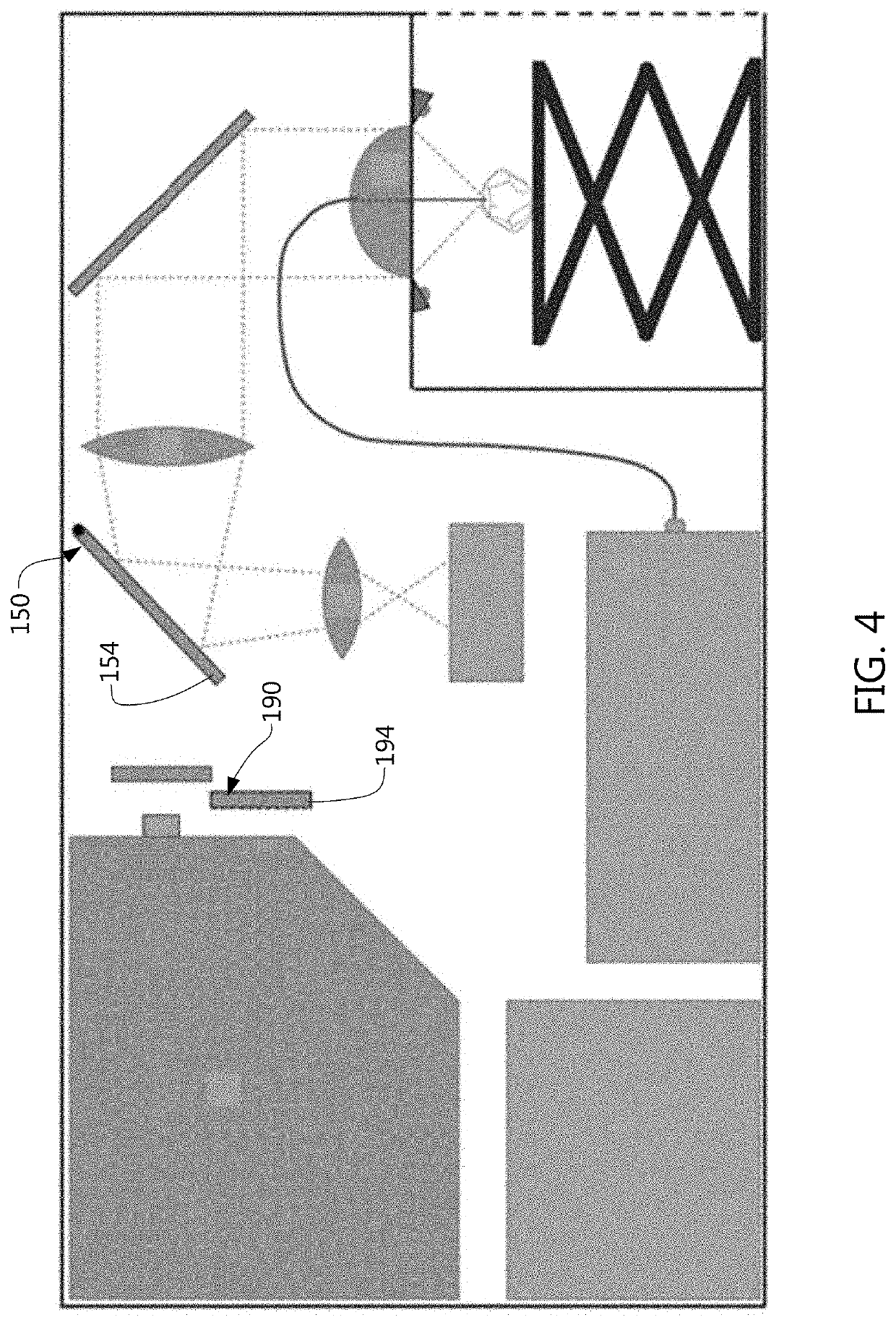Raman Spectroscopy for Minerals Identification
a technology of raman spectroscopy and minerals, which is applied in the field oframan spectroscopy for minerals identification, can solve the problems of high process cost, inability to widely deploy to or readily available to a high percentage of individuals/institutions, and considerable sample preparation, and continues to require considerable training and experien
- Summary
- Abstract
- Description
- Claims
- Application Information
AI Technical Summary
Benefits of technology
Problems solved by technology
Method used
Image
Examples
Embodiment Construction
[0065]Referring now to the drawings, wherein like reference numerals designate corresponding structures throughout the views. The following examples are presented to further illustrate and explain the present invention and should not be taken as limiting in any regard.
[0066]FIG. 1 is a chart representing the characteristics of mineral fluorescence. Peaks 22, 24, and 26 are Mn2+ fluorescence peaks for willemite, hardysonite, and rhodonite, respectively. The group of sharper peaks 32 are Sm2+ fluorescence peaks for anhydrite. The dashed curve 12 is the excitation spectrum for the willemite Mn2+ fluorescence 22 showing what source wavelengths produce higher or lower intensity fluorescence. The bands of the spectrum 10, 20, and 30 show what portion of the spectrum a Raman spectrometer looks at with a 325 nm, 532, and 780 nm laser respectively. Each band represents Raman shifts from 0 to 1500 wavenumbers (“cm−1”).
[0067]Fluorescence is arguably the greatest challenge to the application de...
PUM
| Property | Measurement | Unit |
|---|---|---|
| wavelength | aaaaa | aaaaa |
| pulse frequency | aaaaa | aaaaa |
| wavelength | aaaaa | aaaaa |
Abstract
Description
Claims
Application Information
 Login to View More
Login to View More - R&D
- Intellectual Property
- Life Sciences
- Materials
- Tech Scout
- Unparalleled Data Quality
- Higher Quality Content
- 60% Fewer Hallucinations
Browse by: Latest US Patents, China's latest patents, Technical Efficacy Thesaurus, Application Domain, Technology Topic, Popular Technical Reports.
© 2025 PatSnap. All rights reserved.Legal|Privacy policy|Modern Slavery Act Transparency Statement|Sitemap|About US| Contact US: help@patsnap.com



